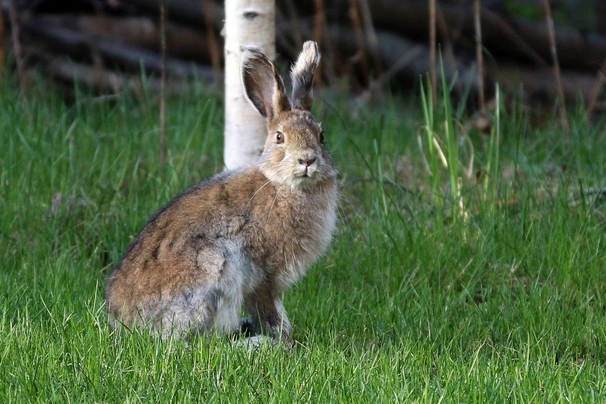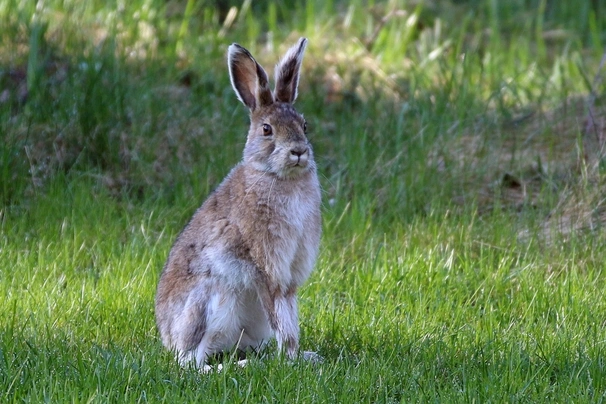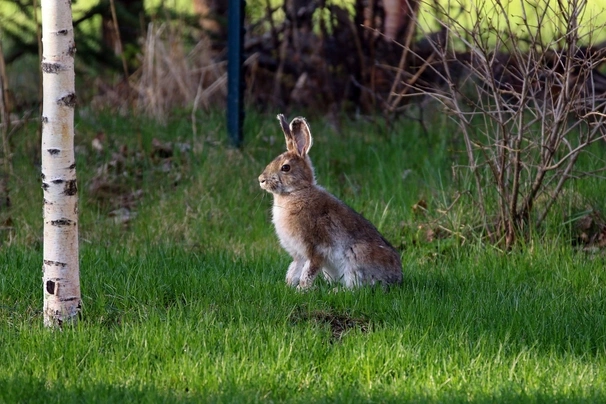Pets
Pets for studWanted petsBreedersAccessories & services
Knowledge hub
Support
Support & safety portalAlaska
Introduction of the Alaska
If you didn’t know better you would be forgiven for thinking that the Alaska Rabbit originated in the freezing wastes of some North American state, but in fact, nothing could be further from the truth. Perhaps even more surprising is the notion that the Alaska Rabbit is currently an unrecognised breed in the US.
The Alaska was developed by German judge Max Gotha as an alternative source of fur from the Alaskan Fox, whose coat was much admired by everyone. The Alaska is instantly recognisable thanks to its striking glossy black fur.
History of the Alaska
Rabbit breeder and judge Max Gotha came up with the idea of developing a rabbit breed that would provide another source of fur that was similar to that of the sought-after Alaskan Fox. A breeding programme was established in 1900.
The original idea behind Gotha’s plan was to breed a rabbit with a sliver-black coat which would essentially be a black animal with very long white guard hairs. However these plans were abandoned when the resulting animal displayed a deep, lustrous black coat with no silvering at all and it was decided to breed for that colourway instead.
The first Alaskas were shown in 1907 and rapidly gained recognition across Europe. By the 1960s and 1970s the Alaska had found its way to Canada and the US, where it was quickly recognised by the ARBA. However the popularity of the Black Havana Rabbit, which is similar in colour and build, saw the Alaska fall out of favour and it was subsequently dropped by the ARBA registry. There are breeders who are hoping the breed will see a resurgence in popularity, but this has yet to happen.
Appearance of the Alaska
- Main colourways: black
- Average weight: 3-4kg
The most striking feature of the Alaska Rabbit is its thick, glossy black coat and because of this they are instantly recognisable. It’s a ‘self’ rabbit and the underside is matt black. The Alaska is a well-rounded, thick set, medium sized rabbit and while they aren’t perhaps as compact as other breeds, they have good ‘bone’ and aren’t a delicate animal.
Bucks are much heavier and larger than the does, which have more feminine features and a large dewlap. The breed should have dark toenails and dark, bright eyes and should only ever be black. The nose and pads of the paws should also be a matt black colour. Nearer the skin the hairs will be a deep slate colour, turning to a vibrant, shiny black towards the tips. A smattering of white hairs are allowed by the breed standard, but any more than that or any white patches or stripes would not be permitted by the standard.
Temperament of the Alaska
Like many other breeds the Alaska is generally docile and makes a great pet or show animal. Rabbits are generally more active in the morning and at night and an Alaska will be fairly active pet. He should be handled carefully only by those who know how to pick rabbits up correctly. It’s easy to cause spinal problems in rabbits if they are not handled properly. Plus, if he feels uncomfortable or fearful while being carried he will struggle and may kick out with his very powerful back legs which could cause injury to whoever is holding him.
Although a gentle and quite affectionate breed, the Alaska can be skittish and should not be cared for by young children. Having said that, he will relish playtime and has lots of energy so will appreciate the company of those who can keep up with him. He will also enjoy playing with toys intended for cats or small dogs – those with rattles or bells seem to be favoured by rabbits. Once he’s exhausted you, he’ll enjoy sitting close by and having a snuggle and a snooze.
The Alaska is an intelligent rabbit and can be trained to use a litter tray quite easily so if you’re planning on bringing your rabbit to live indoors he should be shown where he can relieve himself.
Health of the Alaska
All rabbits should be vaccinated against myxomatosis and VHD – both of which are potentially fatal conditions that can be spread by infected animals, bedding, utensils or toys. They should also be treated regularly for fleas, ticks and worms.
Dental hygiene is an essential part of rabbit care. As a rodent his teeth grow continuously and will need the correct diet to keep them worn down. Overgrown teeth can cause lots of problems for your pet, including difficulty eating, and injuries in the mouth that can lead to abscesses. The best way to combat overgrown molars and enamel spurs is to stop them happening in the first place by providing a diet high in good quality hay and lots of fibrous green vegetables such as cabbage and kale. Gnaw toys also help keep teeth in check. If you suspect a dental issue your vet can carry out an examination and any remedial work necessary.
Your rabbit should never be allowed to get overweight. Excess weight will prevent your pet from looking after himself properly and if he can’t groom then flies may become attracted to soiled areas of fur. These flies could lay their eggs in the fur and the emerging larvae will bury into your rabbit’s skin causing great discomfort and even infection. Flystrike can be prevented by keeping your rabbit’s weight down and making sure his fur and his bedding is scrupulously clean.
Caring for the Alaska
Whether he’s going to be a house or a hutch rabbit, he will need access to a run or a secure area of garden so he can nibble grass and take in some rays. Rabbits love sunbathing, but he should have a shaded area where he can get out of the sun if necessary.
If he’s going to be a house rabbit he should be introduced to other pets carefully and while he’s still young enough not to be scared. He should have a place he can go to get away from it all – a dog crate is ideal for this. He should be provided with a litter tray too and can be trained to use this relatively easily. Cables, wires, shoes, clothes, important papers and anything else you treasure should be kept out of the way as he will chew whatever he can get his teeth into.
If your pet is going to live in a hutch you should consider getting two animals as rabbits live in colonies of many animals in the wild and do not like to live alone. His hutch should be water and windproof and a cover should be placed over the mesh front in the harshest weather. Sawdust makes an excellent substrate and can easily be cleaned out once a week. Droppings should be removed daily. He should have access to clean, fresh water every day and logs, tubes and toys would be welcome additions to his home. The hutch should have a covered area where he can build a nest and go for a snooze or get out of the weather.
His diet should be carefully planned to help him stay fit and healthy and should consist of good hay, high-quality rabbit pellets and lots of green leaves and vegetables such as cabbage, dandelions and nettles.



